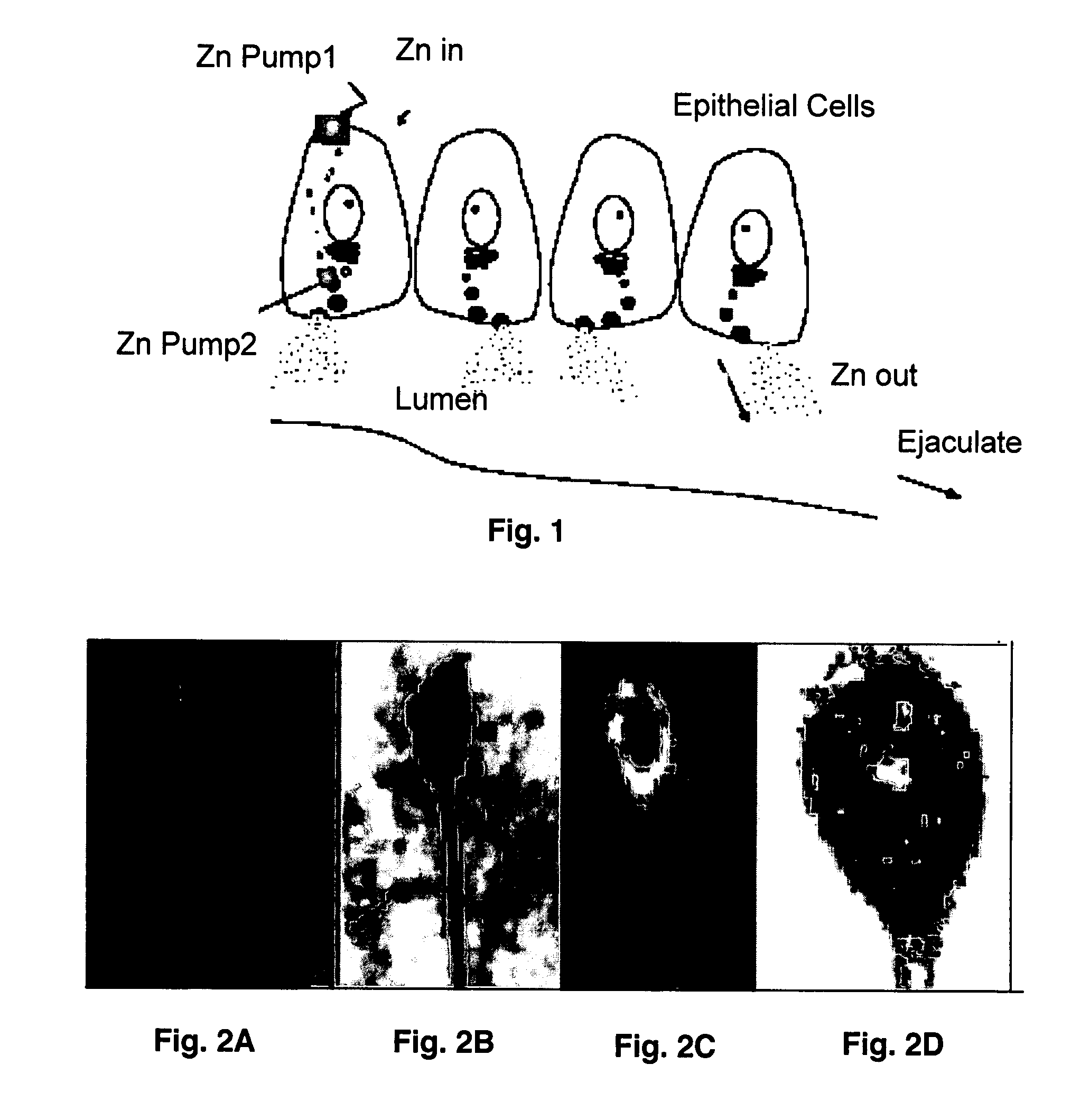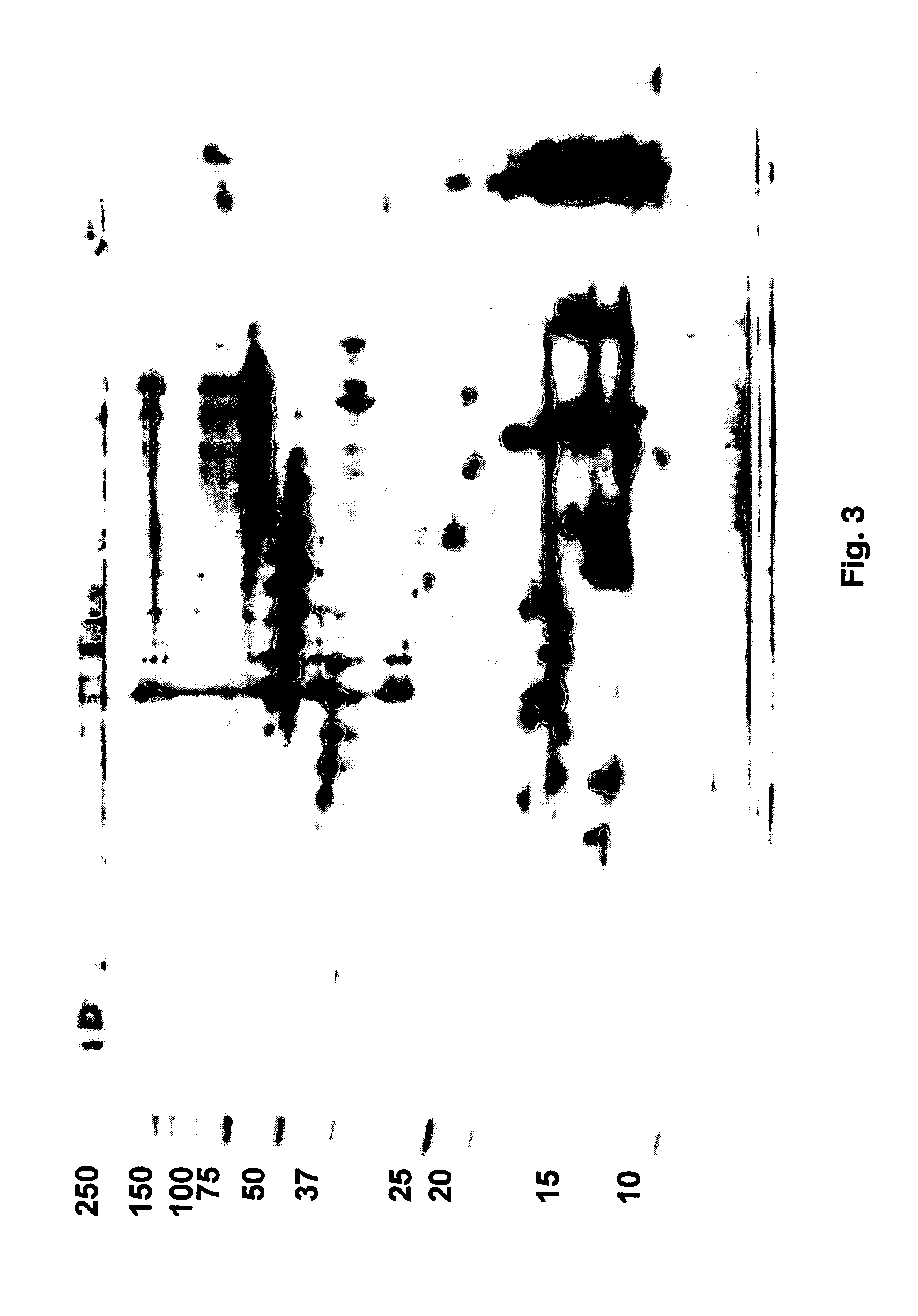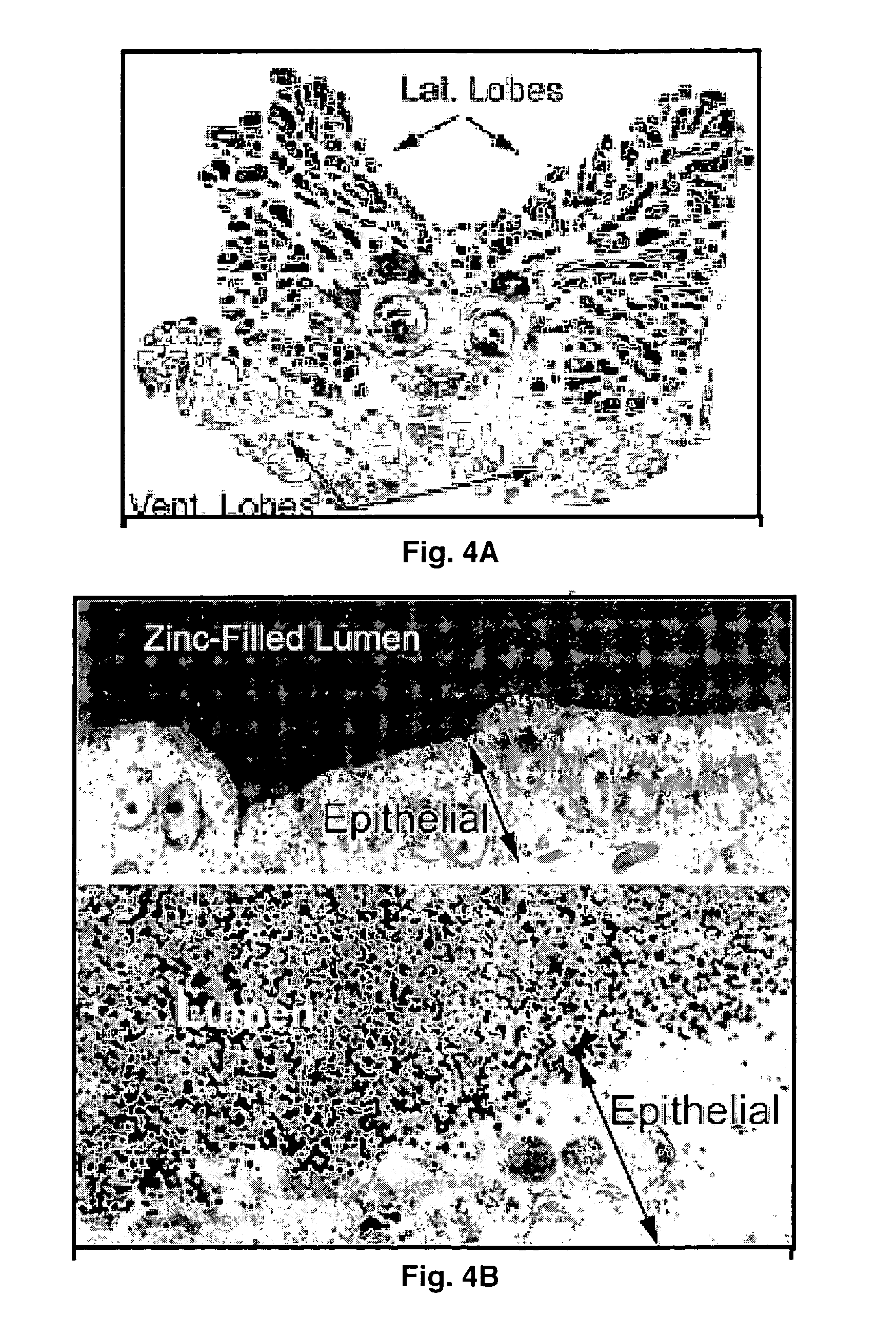Zinc-based screening test and kit for early diagnosis of prostate cancer
- Summary
- Abstract
- Description
- Claims
- Application Information
AI Technical Summary
Benefits of technology
Problems solved by technology
Method used
Image
Examples
Example
EXAMPLE 1
Subcellular and Ultrastructural Localization of Zinc
[0082] Though it is not a quantitative method, the silver AMG methods of Danscher (12) are the definitive method for determining the fine and ultrastructural localization of free or weakly-bound zinc pools. In skilled hands, these methods show as few as 10 atoms of zinc (13). In the male reproductive system, it has been shown that zinc is gradually added to the spermatazoa as they mature through the epididymis and remains hugely enriched through the spermatazoan trip into ejaculate. FIGS. 4A and 4B show enormous amounts of zinc in the prostatic secretions within the tubules. Further, the electron microscopic view shows that the zinc is selectively concentrated in apparent secretory packets in the epithelial cells, poised, as it were, to be secreted into the zinc-rich lumen.
Example
EXAMPLE 2
Distribution of Total Zinc in Tissue by X-Ray Fluorescence
[0083] To determine the distribution of zinc among different cells, globular proteins or different regions of tissue, zinc imaging with synchrotron-induced X-ray fluorescence is used (FIG. 7). This technique can be used to determine the distribution of zinc in the different regions of the prostate gland and in different components, such as globular proteins and spermatozoa, of dried whole ejaculate or prostatic fluid as described below.
Example
EXAMPLE 3
Measurement of Zinc Using apoCA-ABDN Via Fluorescence Ratiometric Methods
[0084] Analysis of Free Zinc
[0085] The present invention employs carbonic anhydrase (CA) as the zinc detector and either ABDN or dansylamide as the fluorescent reporter for high-accuracy measurement. In operation, the fluorescent reporter binds to the CA if and only if the CA has a zinc in the “pocket”, i.e., holoCA. Upon binding to the holoCA, the reporter undergoes an increase in intensity and blue-shift in wavelength of the emission (FIG. 6A), as well as a change in fluorescence anisotropy (FIG. 6B). By starting with the apoCA, one then adds a test solution, and monitors the fraction of the reporter that is blue-shifted, or anisotropy-shifted, by the occurrence of zinc binding to the apoCA (FIG. 6A). The wavelength and anisotropy ratio measurements can be done in test tube or by confocal microscope.
[0086] An entire family of genetically-engineered CA proteins with different affinities for zinc ...
PUM
 Login to view more
Login to view more Abstract
Description
Claims
Application Information
 Login to view more
Login to view more - R&D Engineer
- R&D Manager
- IP Professional
- Industry Leading Data Capabilities
- Powerful AI technology
- Patent DNA Extraction
Browse by: Latest US Patents, China's latest patents, Technical Efficacy Thesaurus, Application Domain, Technology Topic.
© 2024 PatSnap. All rights reserved.Legal|Privacy policy|Modern Slavery Act Transparency Statement|Sitemap



